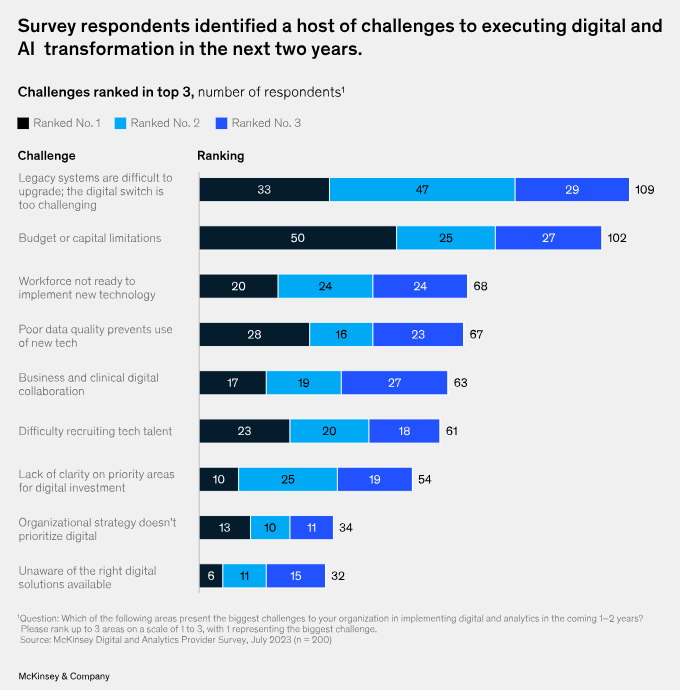Healthcare delivery is changing rapidly as health systems adapt to modern-day obstacles and opportunities. Staffing challenges, clinician burnout, evolving patient expectations, and the accelerated pace of technological innovation are driving radical reinvention in acute care settings.
Most notably, virtual care and artificial intelligence (AI) are converging at the patient bedside to enable more agile workflows for care teams that improve outcomes, enhance capacity, and elevate patient and staff experience. AI-outfitted rooms, digital whiteboards, and remote support for no-touch patient care tasks are emerging as cornerstones in acute care of the future models.
For patients, the future of healthcare engagement is omnichannel, integrated, and digital-first. For clinicians, these advancements finally put clinical teams on par with other industries in terms of remote workflow support and digital enablement. As providers consider what the hospital room of the future will look like, there is an increased focus on making smart investments today in technologies that will help health systems most effectively work toward that future state.

Providers’ Digital Transformation Priorities
McKinsey & Company recently surveyed 200 global health system executives about their digital investment priorities and progress with results to date. 75% of respondents reported that their organizations place a high priority on digital and analytics transformation but lack sufficient resources or planning in this area.
70% of respondents flagged virtual care as one of the top three digital health priorities that will have the biggest impact on their organization. AI was the only digital health priority to edge out virtual care, with 88% of respondents indicating AI among the biggest potential areas of impact. Even so, roughly one in five respondents do not plan to invest in AI within the next two years.
What’s holding providers back from investing in these technologies? Some organizations are waiting out the early stage growing pains in health AI while others are taking a measured step with pilot program implementations. Roughly half of respondents cited budget and capital expenses as a key obstacle to investing at scale.

Virtual health to drive patient experience and access was cited as the digital investment area with the highest performance satisfaction level. And, as McKinsey reports, “Optimizing workflows to enable more appropriate delegation, with technical enablement, could yield a potential 15 to 30 percent net time savings over a 12-hour shift. This could help close the nursing workforce gap by up to 300,000 inpatient nurses.”
The Role of Virtual Care & AI in Acute Care Transformation
In the recent webinar “Acute Care of the Future: How Health Systems Should Position Themselves and How Geisinger is Getting Ahead,” hosted by AVIA, executives from Geisinger Health System, a leader in healthcare innovation, emphasized the importance of investing in and scaling the right digital health experiences. These digital health investments are setting the new standard for attracting patients and staff, driving efficiency, and improving processes.
Today the health system and Caregility customer site’s digital health portfolio includes virtual ICU, sepsis, observation, telemetry, and nursing programs. In 2023 over 73% of admissions and 58% of discharges were conducted virtually at Geisinger with executive leaders reporting several benefits:
- Repurposed 12,000 hours for bedside staff due to fielding tasks virtually
- 3-hour reduction from order-to-admit to arrival from the unit (22% time savings)
- 20-minute reduction in time to discharge (11% time savings)
Geisinger executives emphasized that platforms and ecosystems that support multiple use cases are vital to providing relief and value to care teams. Ease of use is critical to the “stickiness” of these technologies, ensuring that they are adopted and utilized effectively.
Conclusion
The future of acute care lies in embracing digital health innovation to create more efficient, patient-centered, and agile healthcare systems. By investing in the right technologies, health systems can navigate the challenges of today and position themselves for success in the future. As we look ahead, the question we must continually ask ourselves is this: What investments can we make today to future-proof care delivery?
To learn more about virtual care and AI integration solutions, set up a discovery call today.









